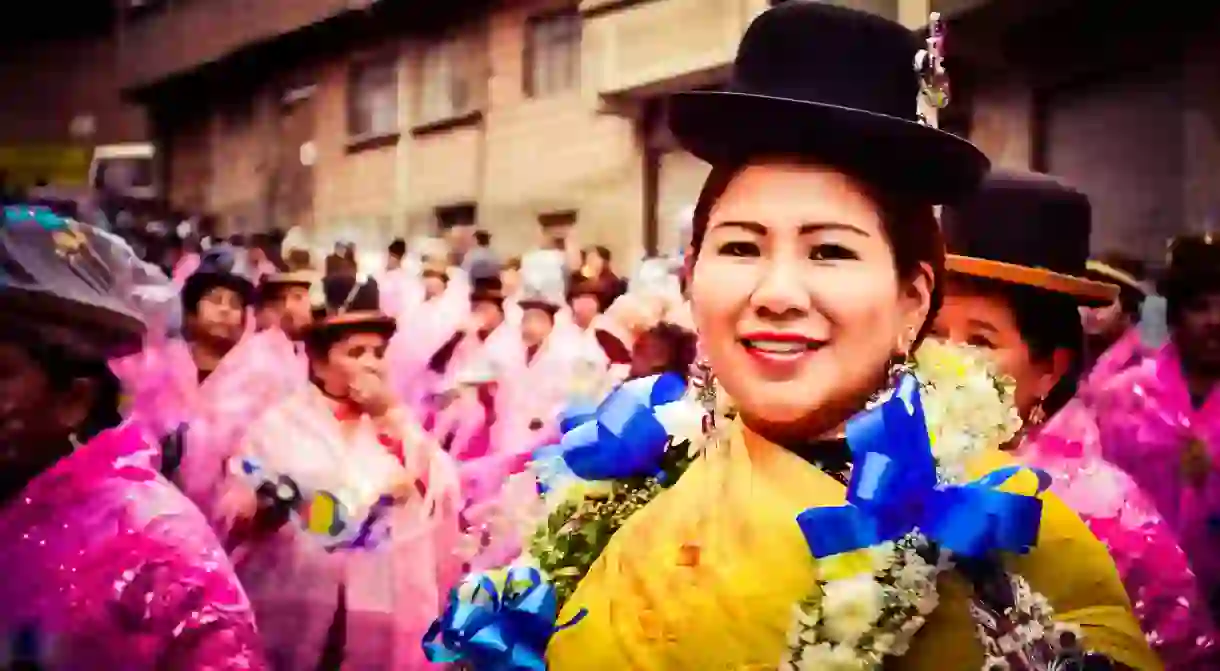From Rags to Riches: Meet the New Bolivian Upperclass Who Have Overcome Poverty

Not so long ago, the indigenous people of Bolivia existed almost entirely in the underclass, relegated to working menial service jobs for an unlivable minimum wage. Recently, however, a renewed sense of indigenous identity, the emergence of new commercial sectors and plain old hard work and perseverance have seen scores of these previously marginalized proletariat transform into the country’s new wealthy elite. Much of their success has been in El Alto and La Paz, where these modern day ‘Aymara bourgeois’ have changed the class structure of the region forever.
Since earning the top job in 2006, president Evo Morales has endeavored to restore the dignity and economic equality of his fellow indigenous Bolivians. New legislation has put harsh sanctions on discriminatory practices, while generous increases to the minimum wage have enabled the poorest indigenous to achieve a dignified standard of living. These policies, among others, have been widely credited with restoring a sense of indigenous pride that has given many the confidence to engage in new business opportunities.

However, the primary driver behind the new financial elite has undoubtedly been the nation’s booming economy. Bolivia is a resource rich country flush with large reserves of minerals and natural gas. Not long after coming to power, Morales was blessed with sky high global commodity prices, which along with widespread nationalization saw huge amounts of money amass within the government coffers. According to the United Nations Development Program, during the most prosperous years of 2010-2015 at least a million Bolivians leaped over the poverty line to join the middle class.
This larger middle-class has played a crucial role in the emergence of the new economic elite. Large sections of the population were suddenly able to spend like never before, creating exciting new business opportunities in the services, transportation and construction industries. But it is in commerce where the real money has been made. The importing of everyday goods from China by the container load has made literal millionaires out of modest citizens, especially when smuggled into the country tax free.

Most of these newly wealthy Bolivians were born in the impoverished countryside of the highland plateau. They moved to the city during the past few decades in search of a better life, gradually building up businesses from scratch. The wealthiest now live in La Paz’ most exclusive neighborhoods in mansions paid for in cash. Others have purchased extravagant New Andean cholets designed by local celebrity Freddy Mamani, colorful and boisterous status symbols that contrast heavily with the ramshackle huts below. A 2015 BBC article details some of their stories.

Elizabeth Verástegui is one of the most successful fashion retailers in La Paz’ ritzy Zona Sur. She started out in the mid 80s with less than US$70 to her name, purchasing used clothing and reselling for a modest profit. “…To earn money I did everything myself. I washed, I ironed, I couldn’t hire anyone. I got up before dawn, while it was still dark, while it was raining, snowing and cold, to find used clothes…” she said.
Fortunato Maldonado was homeless 30 years ago. He started out with just $US50 and collected and sold scrap metal to save money for investments. His mining company now owns over 100 vehicles. “Everybody asks me where I get the money. What they don’t know is that the whole year I’m working. My children and I travel 12 months a year to supervise our projects. I walked to the fair 100 times before finding the scrap I needed…” he explained.

Of course, not all indigenous Bolivians have found such success in recent years. Many, especially those of the countryside, continue to live in debilitating poverty where finding money for everyday expenses is a constant struggle. But for the lucky few who rode the momentum of the indigenous rights revolution and worked hard to take advantage of the economic boom, their newfound fortunes have earned them a place in Bolivia’s upper-class, the new Aymara Bourgeois.













